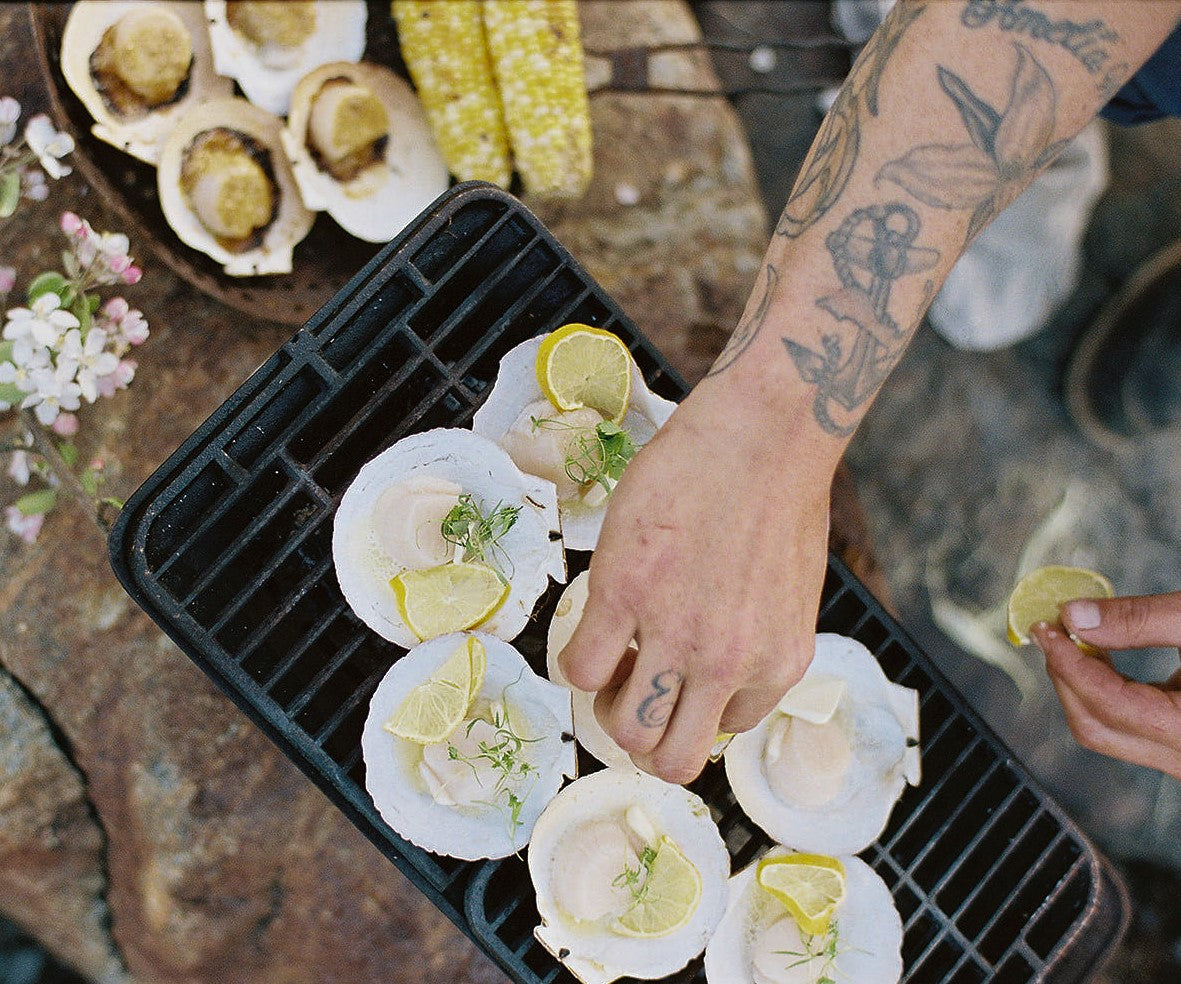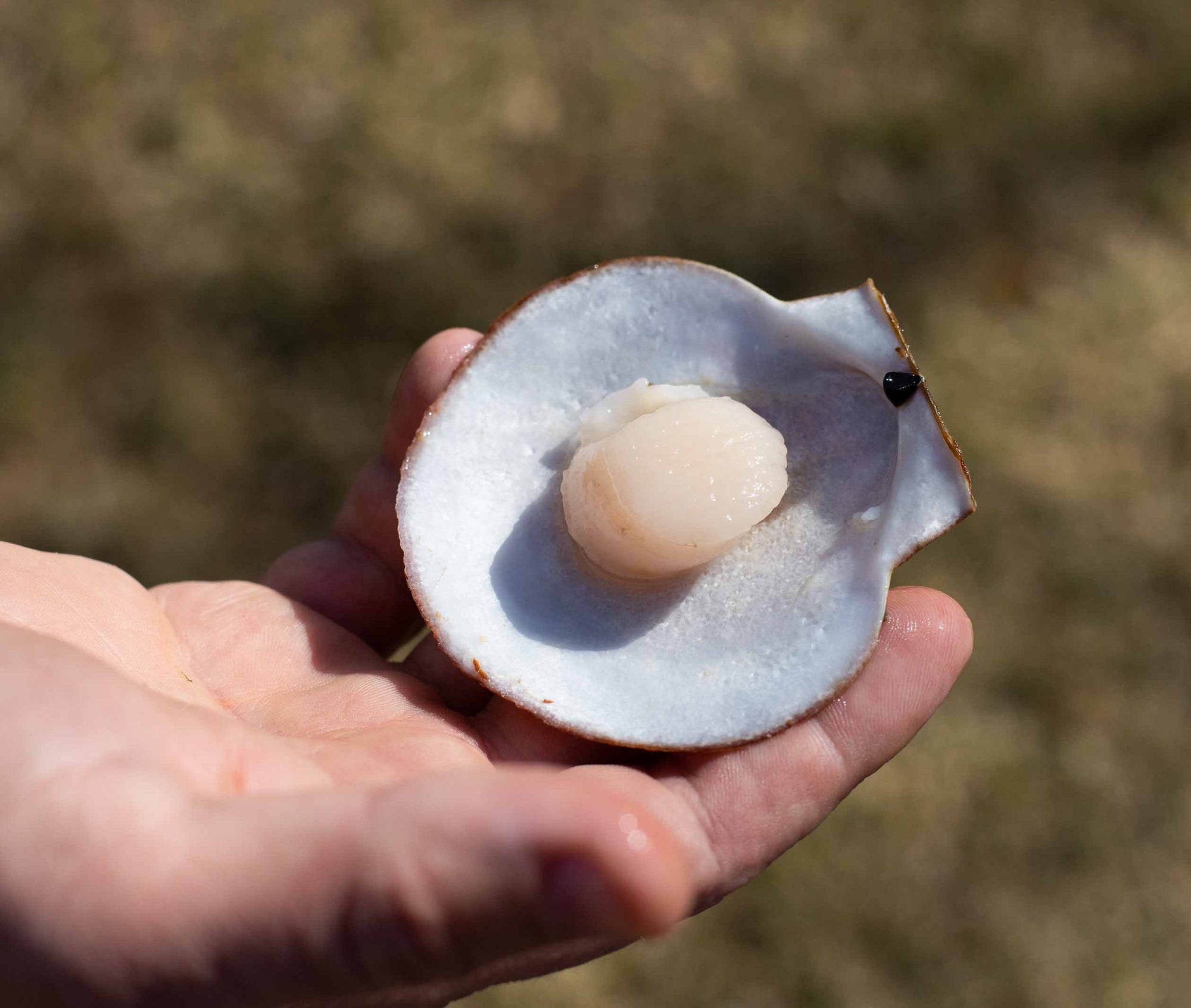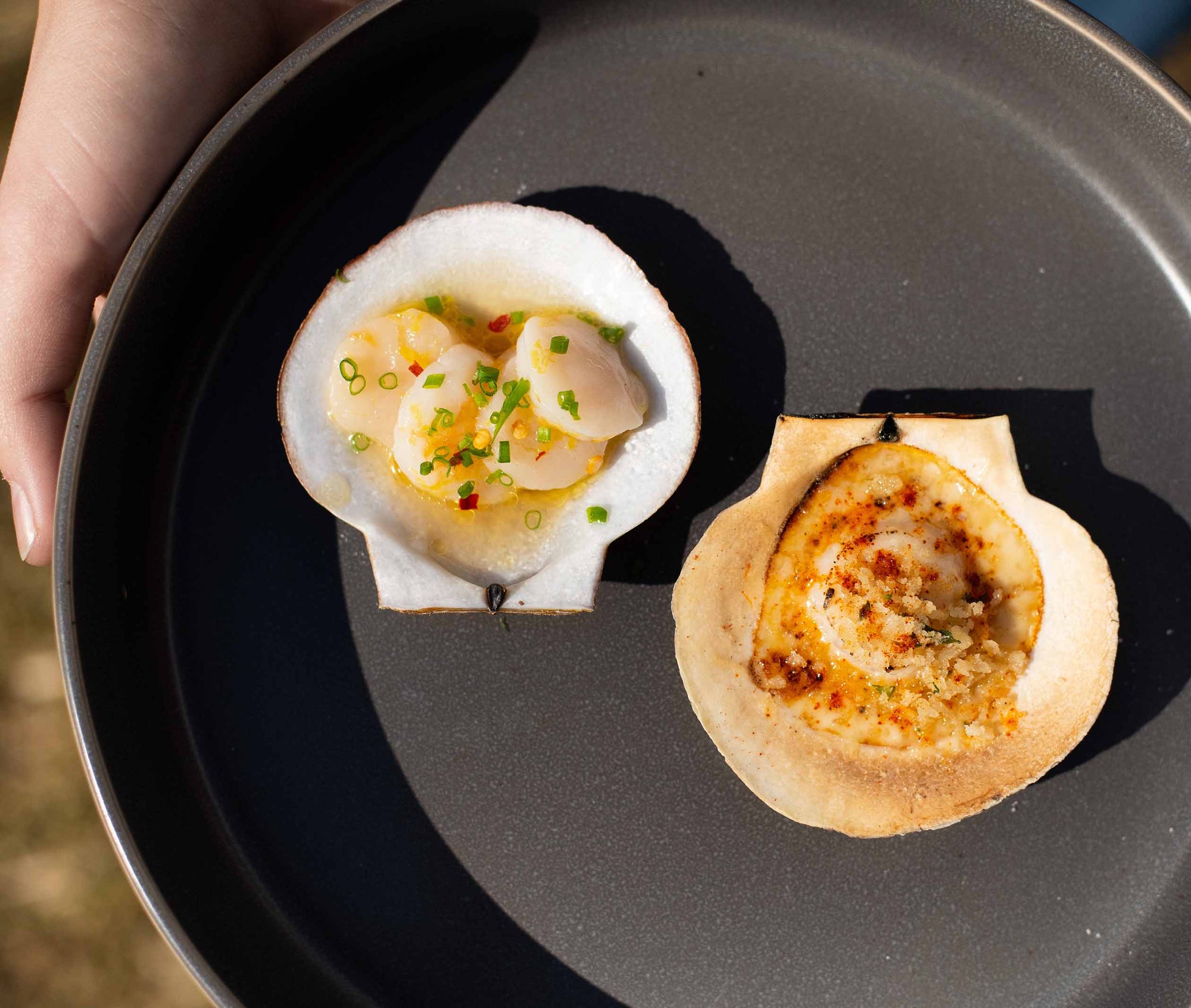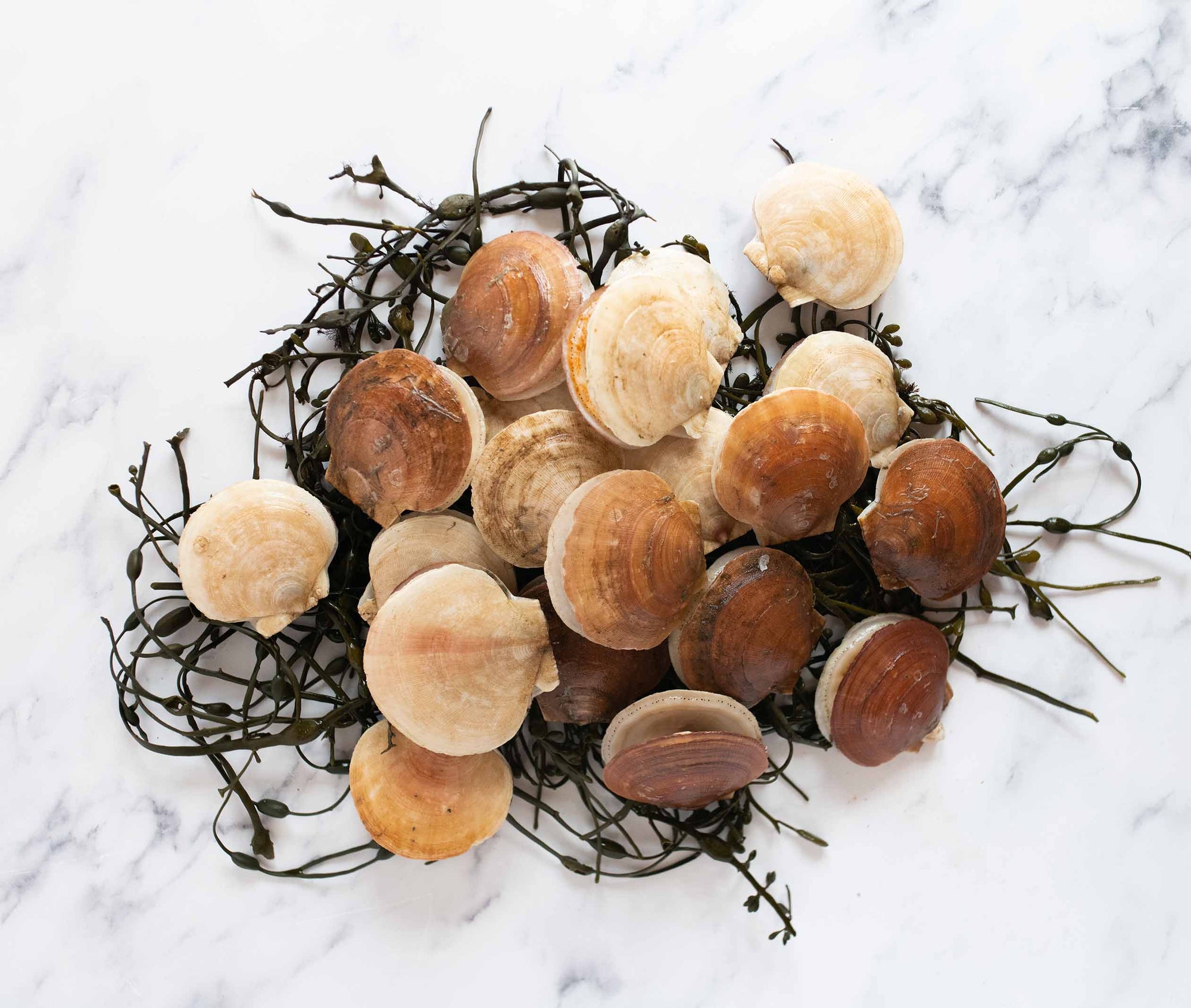Live Sea Scallops from Penobscot Bay, ME
$109.00
Please select all options.
Pre-Order for Delivery on Wednesday, April 9th - Saturday, April 12th
Live scallops are, well, lively and slightly open shells are completely normal! Store in the refrigerator under a cool, damp towel in a closed lid container. Best enjoyed within 1-2 days of delivery!
Farm: Pen Bay Farmed Scallops in Penobscot Bay, ME
Grower: Marsden Brewer
How They Taste: Clean sweetness, with the most beautiful kiss of salinity....the only thing that surpasses it's elegant flavor is the firm tenderness of a scallop so darn fresh!
How They're Grown: Marsden raises his scallops from wild-caught seed that he collects using suspended spat bags that hang in the water column over the soft bottom where the new settlers would either smother out in the mud or be grazing material for species like brittle stars.
The bags are collected after about 8-10 weeks and are transported to one of our lease sites which consists of underwater longlines that are held at a depth of 20 feet at low tide so as not to impede navigation in the bay. Their grow out process takes 2 years for petites, 3 years for mediums and 4 years for the large cull!
Their lease is a little over ten acres which provides room for ten 600-foot longlines upon which lantern nets are hung. Fun fact: "What's a lantern net?" you might ask? A lantern net is a round net that is 20" across and 6' deep with 10 floors in it that is used to grow scallops.
Why They're Unique: The waters around Stonington are known for the high quality of the scallops that the area produces. Farmer's leases are purposely sited to allow both aquaculture and wild fisheries to co-exist.
Story: Marsden started catching wild scallop larvae in 1998. The original idea was to do wild stock enhancement with a goal of developing a sustainable fishery. After a few years of experiments it became evident that in order for wild stock enhancement to work it was going to take some sort of intermediate culture and the cost verses the return did not add up.
Then they started looking at it a different way; What if instead of releasing a few million young scallops, we grew scallops up to a point where many of them could reproduce? Holding 140 reproductive scallops in a 10 tiered lantern net with each female producing about a million eggs would make a great love nest for broadcast spawners and letting a couple hundred nets worth of scallops spawn out could create a few hundred billion larvae.






